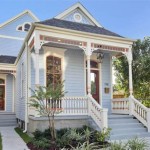Floor plans of old houses are precise drawings that depict the layout of a home’s interior space. They provide detailed information about the arrangement of rooms, hallways, and staircases, as well as the location of windows, doors, and other structural features. These plans are essential for understanding the architectural design of a building and can be used for a variety of purposes, including renovation, restoration, and historic preservation.
Floor plans have been used throughout history to record the design of houses and other buildings. In the past, these plans were often drawn by hand, but today they are typically created using computer-aided design (CAD) software. Floor plans can provide a wealth of information about a building’s history, including its original design, any modifications that have been made over time, and the materials that were used in its construction.
In the following sections, we will explore the different types of floor plans of old houses and discuss how these plans can be used to understand the architectural design of a building and its history.
When examining floor plans of old houses, there are several key aspects to consider, which can provide valuable insights into the building’s design and history.
- Original design intent
- Modifications over time
- Construction materials
- Room arrangement
- Circulation patterns
- Architectural style
- Social history
- Technological advancements
- Regional influences
- Cultural factors
By carefully analyzing these elements, researchers and preservationists can gain a deeper understanding of the building’s significance and its place in the broader context of architectural history.
Original design intent
The original design intent of a floor plan refers to the architect’s or builder’s original vision for the layout and function of a house. This intent can be inferred from the arrangement of rooms, the size and shape of the rooms, the location of windows and doors, and the overall flow of the house.
For example, a house with a large, central living room and a formal dining room was likely designed to accommodate large gatherings and entertaining guests. A house with a more open floor plan, with fewer walls dividing the living spaces, was likely designed to promote a more casual and informal lifestyle.
The original design intent can also be influenced by the social and cultural norms of the time period in which the house was built. For example, in the Victorian era, houses were often designed with separate spheres for men and women. The men’s quarters were typically located on the first floor, while the women’s quarters were located on the second floor.
Understanding the original design intent of a house can help us to appreciate the building’s architectural significance and its place in history. It can also help us to make informed decisions about how to renovate or restore a house, while respecting its original character.
Modifications over time
Floor plans of old houses can also reveal how a building has been modified over time. These modifications can be minor, such as the addition of a new room or the relocation of a doorway, or they can be major, such as the complete reconfiguration of the interior layout.
- Additions
As a house’s needs change, additions are often made to accommodate new functions. For example, a house may be expanded to add a new bedroom, bathroom, or family room. Additions can also be made to change the style of a house, such as adding a porch or a garage.
- Remodels
Remodels involve making changes to the interior layout of a house. These changes can be made to improve the flow of the house, to update the style of the house, or to make the house more functional. For example, a kitchen may be remodeled to add new appliances or to create a more open floor plan.
- Conversions
Conversions involve changing the use of a space within a house. For example, a house may be converted from a single-family home to a multi-family home, or a barn may be converted into a house.
- Demolitions
In some cases, parts of a house may be demolished to make way for new additions or to change the overall layout of the house. For example, a wall may be removed to create a more open floor plan, or a porch may be demolished to make way for a new addition.
Modifications over time can provide valuable insights into the history of a house and its occupants. By carefully analyzing these modifications, researchers and preservationists can gain a better understanding of how a house has evolved over time and how it has been adapted to meet the changing needs of its occupants.
Construction materials
The construction materials used in a house can have a significant impact on its floor plan. For example, a house built with load-bearing walls will have a different floor plan than a house built with a post-and-beam frame. Similarly, a house built with stone or brick will have a different floor plan than a house built with wood.
Load-bearing walls are walls that support the weight of the roof and the floors above. Load-bearing walls are typically made of thick, solid materials, such as stone, brick, or concrete. Houses with load-bearing walls typically have a more traditional floor plan, with rooms arranged around a central hallway. This type of floor plan is often found in older houses, such as Victorian and Colonial houses.
Post-and-beam frames are frames made of vertical posts and horizontal beams. The posts and beams support the weight of the roof and the floors above. Houses with post-and-beam frames typically have a more open floor plan, with fewer walls dividing the living spaces. This type of floor plan is often found in modern houses, such as mid-century modern houses and contemporary houses.
The choice of construction materials can also affect the size and shape of the rooms in a house. For example, a house with load-bearing walls will typically have smaller rooms than a house with a post-and-beam frame. This is because the load-bearing walls take up more space than the posts and beams in a post-and-beam frame.
The construction materials used in a house can also affect the overall cost of the house. For example, a house built with stone or brick will typically be more expensive than a house built with wood. This is because stone and brick are more expensive materials than wood.
Room arrangement
The arrangement of rooms in a house can tell us a lot about the lifestyle of the people who lived there. For example, a house with a formal dining room and a separate living room was likely designed for entertaining guests. A house with a more open floor plan, with fewer walls dividing the living spaces, was likely designed for a more casual and informal lifestyle.
- Public rooms
Public rooms are rooms that are used by the whole family, such as the living room, dining room, and kitchen. Public rooms are typically located on the first floor of a house, where they are easily accessible to guests. Public rooms are often designed to be spacious and inviting, with large windows that let in plenty of natural light.
- Private rooms
Private rooms are rooms that are used by individuals, such as bedrooms and bathrooms. Private rooms are typically located on the second floor of a house, where they are more private and quiet. Private rooms are often designed to be smaller and more cozy than public rooms, with smaller windows that provide more privacy.
- Service rooms
Service rooms are rooms that are used for specific tasks, such as cooking, cleaning, and laundry. Service rooms are typically located in the basement or on the first floor of a house, where they are out of the way of the main living areas. Service rooms are often designed to be functional and efficient, with plenty of storage space and easy access to utilities.
- Circulation spaces
Circulation spaces are spaces that allow people to move around the house, such as hallways, stairs, and landings. Circulation spaces are typically designed to be efficient and easy to navigate. They are often located in the center of the house, where they can provide access to all of the different rooms.
The arrangement of rooms in a house can also be influenced by the social and cultural norms of the time period in which the house was built. For example, in the Victorian era, houses were often designed with separate spheres for men and women. The men’s quarters were typically located on the first floor, while the women’s quarters were located on the second floor.
Understanding the room arrangement of a house can help us to appreciate the building’s architectural significance and its place in history. It can also help us to make informed decisions about how to renovate or restore a house, while respecting its original character.
Circulation patterns
The circulation patterns in a house refer to the way that people move through the house. These patterns are influenced by the arrangement of rooms, the location of doors and windows, and the size and shape of the house. Circulation patterns can have a significant impact on the overall functionality and livability of a house.
- Axial circulation
Axial circulation is a type of circulation pattern in which the rooms are arranged along a central axis. This type of circulation pattern is often found in traditional houses, such as Georgian and Federal houses. Axial circulation patterns can create a sense of symmetry and order, and they can make it easy to move from one room to another.
- Radial circulation
Radial circulation is a type of circulation pattern in which the rooms are arranged around a central point. This type of circulation pattern is often found in modern houses, such as mid-century modern houses and contemporary houses. Radial circulation patterns can create a sense of openness and flow, and they can make it easy to access all of the different rooms in the house.
- Peripheral circulation
Peripheral circulation is a type of circulation pattern in which the rooms are arranged around the perimeter of the house. This type of circulation pattern is often found in small houses and cottages. Peripheral circulation patterns can create a sense of privacy and coziness, and they can make it easy to access the outdoors.
- Double-loaded circulation
Double-loaded circulation is a type of circulation pattern in which the rooms are arranged on both sides of a central hallway. This type of circulation pattern is often found in narrow houses and townhouses. Double-loaded circulation patterns can make efficient use of space, and they can create a sense of intimacy and connection between the different rooms in the house.
Understanding the circulation patterns in a house can help us to appreciate the building’s architectural significance and its place in history. It can also help us to make informed decisions about how to renovate or restore a house, while respecting its original character.
Architectural style
The architectural style of a house can have a significant impact on its floor plan. For example, a house built in the Victorian style will have a different floor plan than a house built in the Colonial style. This is because the architectural style of a house determines the overall design of the house, including the arrangement of the rooms, the size and shape of the rooms, and the location of the windows and doors.
Here are some of the most common architectural styles found in old houses:
- Colonial
Colonial houses are typically characterized by their symmetrical facade, central chimney, and simple floor plan. The first floor of a Colonial house typically consists of a central hallway with rooms arranged on either side. The second floor typically consists of a central hallway with bedrooms arranged on either side.
- Victorian
Victorian houses are typically characterized by their elaborate ornamentation, asymmetrical facade, and complex floor plan. The first floor of a Victorian house typically consists of a central hallway with rooms arranged on either side. The second floor typically consists of a central hallway with bedrooms arranged on either side, as well as one or more additional rooms, such as a library or a music room.
- Craftsman
Craftsman houses are typically characterized by their simple lines, natural materials, and handcrafted details. The floor plan of a Craftsman house is typically open and flowing, with a central living room surrounded by other rooms. The bedrooms are typically located on the second floor.
- Mid-century modern
Mid-century modern houses are typically characterized by their clean lines, open floor plans, and large windows. The floor plan of a mid-century modern house is typically open and flowing, with a central living room surrounded by other rooms. The bedrooms are typically located on one side of the house, while the kitchen and dining room are located on the other side.
The architectural style of a house can also be influenced by the region in which it was built. For example, houses built in the New England region of the United States are typically different from houses built in the Southern region of the United States. This is because the different regions of the United States have different climates, which has led to the development of different architectural styles.
Understanding the architectural style of a house can help us to appreciate the building’s historical significance and its place in history. It can also help us to make informed decisions about how to renovate or restore a house, while respecting its original character.
Social history
The floor plans of old houses can also provide valuable insights into the social history of the people who lived in them. For example, the size and arrangement of the rooms can tell us about the family structure and the social customs of the time period.
- Family structure
The size and arrangement of the rooms in a house can tell us a lot about the family structure of the people who lived there. For example, a house with a large number of bedrooms and bathrooms is likely to have been occupied by a large family. A house with a separate dining room and living room is likely to have been occupied by a family that entertained guests frequently. A house with a small number of rooms and a shared bathroom is likely to have been occupied by a small family or by a family that did not have a lot of money.
- Social customs
The floor plans of old houses can also tell us about the social customs of the time period in which they were built. For example, a house with a separate entrance for servants is likely to have been occupied by a family that had a lot of servants. A house with a large porch or veranda is likely to have been occupied by a family that enjoyed spending time outdoors. A house with a basement is likely to have been occupied by a family that needed extra space for storage or for other activities.
- Changing social norms
The floor plans of old houses can also show how social norms have changed over time. For example, in the Victorian era, houses were often designed with separate spheres for men and women. The men’s quarters were typically located on the first floor, while the women’s quarters were located on the second floor. In the 20th century, houses began to be designed with more open floor plans, which reflected the changing social norms of the time.
- Social class
The floor plans of old houses can also tell us about the social class of the people who lived in them. For example, a house with a large number of rooms and expensive finishes is likely to have been occupied by a wealthy family. A house with a small number of rooms and simple finishes is likely to have been occupied by a poor family.
Understanding the social history of old houses can help us to appreciate the buildings’ architectural significance and their place in history. It can also help us to better understand the lives of the people who lived in them.
Technological advancements
Technological advancements have played a significant role in the evolution of floor plans of old houses. Over the years, new technologies have been developed that have made it possible to create more efficient, comfortable, and stylish homes.
- Improved building materials
One of the most significant technological advancements that has affected the floor plans of old houses is the development of new building materials. In the past, houses were typically built with wood, brick, or stone. However, today there are a wide variety of building materials available, including steel, concrete, and glass. These new materials have made it possible to create houses that are more durable, energy-efficient, and resistant to fire and pests.
- New construction methods
Another technological advancement that has affected the floor plans of old houses is the development of new construction methods. In the past, houses were typically built using traditional methods, such as stick framing and masonry construction. However, today there are a variety of new construction methods available, including prefabrication and modular construction. These new methods have made it possible to build houses more quickly and efficiently, and they have also made it possible to create more complex and innovative floor plans.
- Advances in heating and cooling systems
Technological advancements have also led to the development of more efficient heating and cooling systems. In the past, houses were typically heated with wood-burning stoves or fireplaces. However, today there are a variety of more efficient heating systems available, including central heating and heat pumps. These new systems have made it possible to create homes that are more comfortable and energy-efficient, and they have also made it possible to create more open and flexible floor plans.
- Improved lighting technology
Technological advancements have also led to the development of improved lighting technology. In the past, houses were typically lit with candles or oil lamps. However, today there are a variety of more efficient lighting technologies available, including electric lighting and LED lighting. These new technologies have made it possible to create homes that are more and welcoming, and they have also made it possible to create more dramatic and sophisticated lighting effects.
These are just a few of the technological advancements that have affected the floor plans of old houses. As technology continues to advance, we can expect to see even more innovative and efficient floor plans in the future.
Regional influences
The floor plans of old houses can also be influenced by the region in which they were built. This is because the climate, geography, and cultural traditions of a region can all have an impact on the design of its houses.
- Climate
The climate of a region can have a significant impact on the floor plan of a house. For example, houses in cold climates are typically built with smaller windows and thicker walls to keep the heat in. Houses in warm climates are typically built with larger windows and thinner walls to let the heat out. In addition, the climate of a region can also affect the size and shape of a house. For example, houses in rural areas are often larger than houses in urban areas because there is more land available.
- Geography
The geography of a region can also have an impact on the floor plan of a house. For example, houses in mountainous regions are often built on slopes, which can affect the way that the rooms are arranged. Houses in coastal regions are often built on stilts to protect them from flooding. In addition, the geography of a region can also affect the materials that are used to build a house. For example, houses in areas with a lot of forests are often built with wood, while houses in areas with a lot of stone are often built with stone.
- Cultural traditions
The cultural traditions of a region can also have an impact on the floor plan of a house. For example, in some cultures, it is customary for families to live in extended families, which can lead to houses with multiple bedrooms and bathrooms. In other cultures, it is customary for families to live in nuclear families, which can lead to houses with fewer bedrooms and bathrooms. In addition, the cultural traditions of a region can also affect the way that the rooms in a house are used. For example, in some cultures, the kitchen is considered to be the heart of the home, while in other cultures, the living room is considered to be the heart of the home.
- Local building codes
Local building codes can also have an impact on the floor plan of a house. These codes are designed to ensure that houses are safe and habitable, and they can vary from region to region. For example, some building codes require houses to have a certain number of windows, while other building codes require houses to have a certain amount of insulation. In addition, local building codes can also affect the size and shape of a house. For example, some building codes limit the height of houses, while other building codes limit the size of houses.
These are just a few of the regional influences that can affect the floor plans of old houses. By understanding the regional influences that have shaped a particular house, we can gain a deeper appreciation for its architectural significance and its place in history.
Cultural factors
Cultural factors can also have a significant impact on the floor plans of old houses. For example, in some cultures, it is customary for families to live in extended families, which can lead to houses with multiple bedrooms and bathrooms. In other cultures, it is customary for families to live in nuclear families, which can lead to houses with fewer bedrooms and bathrooms.
In addition, the cultural traditions of a region can also affect the way that the rooms in a house are used. For example, in some cultures, the kitchen is considered to be the heart of the home, while in other cultures, the living room is considered to be the heart of the home. This can lead to different arrangements of the rooms in a house.
Furthermore, cultural factors can also affect the materials that are used to build a house. For example, in some cultures, it is customary to build houses with natural materials, such as wood and stone. In other cultures, it is customary to build houses with man-made materials, such as concrete and steel. This can lead to different construction techniques and different floor plans.
Finally, cultural factors can also affect the size and shape of a house. For example, in some cultures, it is customary to build large houses with multiple stories. In other cultures, it is customary to build small houses with one story. This can lead to different floor plans and different ways of living.
By understanding the cultural factors that have shaped a particular house, we can gain a deeper appreciation for its architectural significance and its place in history.










Related Posts








